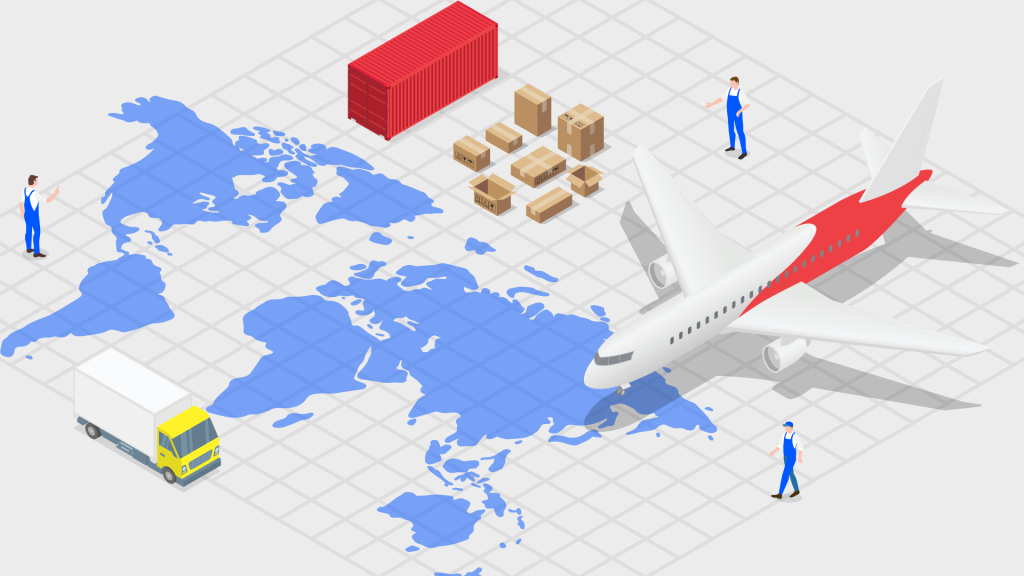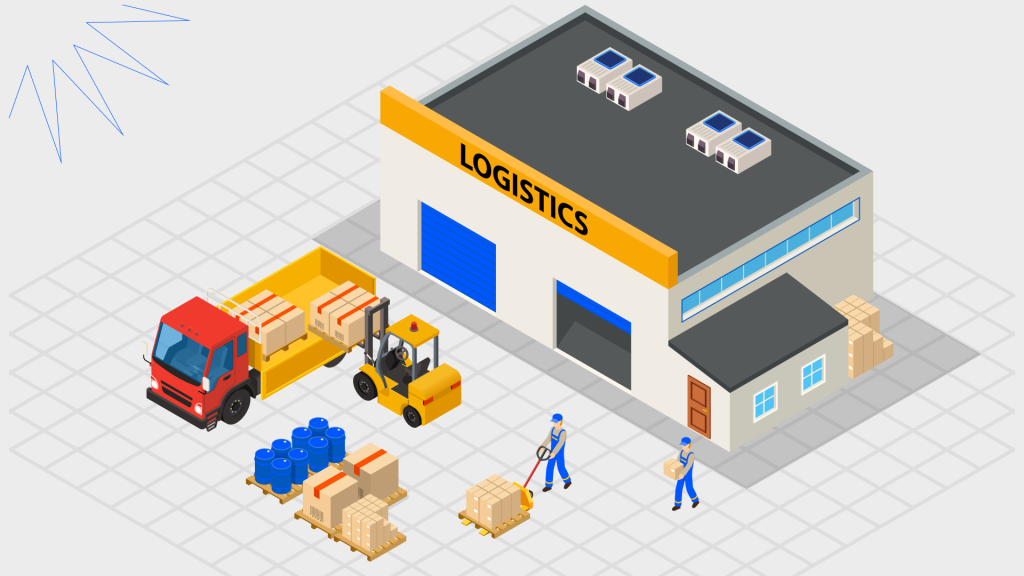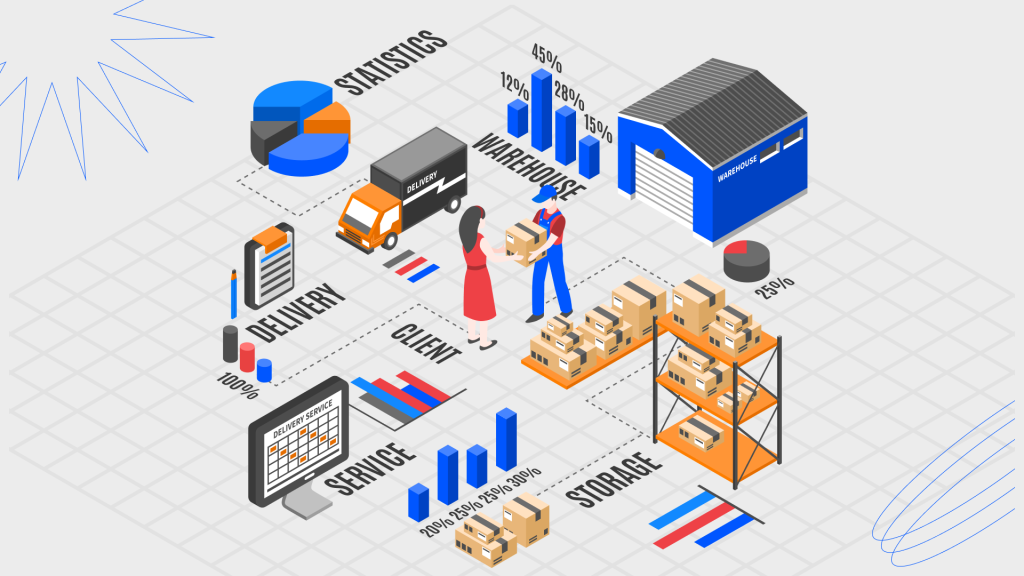As businesses expand globally, cross-border logistics plays a crucial role in facilitating the movement of goods across different countries. It involves the transportation, storage, and distribution of products through various supply chain channels to meet the demands of customers in foreign markets. In this article, we will explore the challenges and opportunities that companies face in international delivery.
Cross-border logistics is the management and coordination of the transportation, documentation, customs clearance, and other related activities involved in the movement of goods and resources across national borders. This process requires compliance with various regulations and laws governing international trade and involves the use of advanced technologies and systems to ensure timely and efficient delivery of products and materials to customers in different countries. It requires careful planning, coordination, and communication among stakeholders to optimize supply chain operations and minimize costs.

Logistics: The Backbone of Cross-Border Trade
Cross-border trade heavily relies on logistics as it involves various essential activities, including transportation, inventory management, and warehousing. Logistics serves as the backbone of the cross-border trade, ensuring the smooth and efficient flow of goods across international borders. To ensure the smooth flow of goods, companies must have robust logistics strategies that take into account the unique challenges of international final mile delivery. For example different customs regulations, varying product standards, and complex documentation requirements.
Supply Chain Management: A Key Component of Cross-Border Logistics
Supply chain management is a strategic approach to managing the flow of goods, services, and information from the point of origin to the point of consumption. It involves the integration and coordination of activities such as sourcing, procurement, production, transportation, warehousing, and distribution to achieve optimal supply chain performance.
Effective supply chain management involves implementing a range of best practices, including demand planning, inventory management, supplier relationship management, and logistics optimization. These practices aim to minimize costs, maximize efficiency, and enhance customer value.
To achieve these objectives, supply chain managers use a range of advanced tools and technologies, such as enterprise resource planning (ERP) systems, radio-frequency identification (RFID) technology, and data analytics. These tools enable them to track and monitor supply chain activities, identify bottlenecks, and make data-driven decisions to optimize supply chain operations.
Meanwhile supply chain management can help businesses manage the risks associated with cross-border logistics. For example, by implementing robust inventory management practices, businesses can ensure that they have sufficient stock on hand to meet customer demand while minimizing the risk of stockouts or overstocking. Similarly, by establishing strong relationships with suppliers and logistics providers, businesses can mitigate the risk of disruptions caused by factors such as inclement weather, labor strikes, or geopolitical events.
Warehousing: Ensuring Efficiency
Companies must have adequate warehouse facilities that can accommodate the unique requirements of cross-border trade, such as different product standards and regulations. Furthermore, companies must have real-time visibility into their inventory levels to prevent stockouts and delays in delivery.
Opportunities in Cross-Border Logistics
Increased market access
Cross-border logistics provides companies with access to new markets and customers, helping them expand their customer base and increase revenue. Companies can leverage the growing trend of e-commerce to reach new customers across borders and offer their products and services globally.
Reduced costs
By optimizing logistics operations and leveraging economies of scale, cross-border logistics can also help companies reduce costs. For example, companies can consolidate shipments to reduce transportation costs or use technology to improve supply chain visibility and reduce inventory costs.
Improved efficiency
By leveraging technology and data analytics, companies can optimize their logistics operations, automate waybills, reduce lead times, and improve their delivery times, leading to improved customer satisfaction.
Diversification of supply chain
Cross-border logistics also enables companies to diversify their supply chain, reducing their dependence on a single source for raw materials or finished goods. This can help mitigate risks such as natural disasters, political instability, or trade disputes.
Strategic partnerships
Collaborating with local partners or logistics providers can also provide opportunities for companies to expand their cross-border logistics capabilities. By working with local partners, companies can gain access to local expertise, reduce risks, and improve their logistics capabilities in new markets. Basically Fulfillment service providers can be good local partners, they usually have their own courier network in each country, as well as many warehouses around the world. It is important that such a partner has its own software, because the control of the remaining goods in warehouses and the accurate movement of goods is an important part of effective delivery.
Challenges in Cross-Border Logistics
International logistics can be complex and challenging, with a range of issues that companies must navigate to ensure timely and cost-effective delivery of goods. Here are some of the main challenges:
Customs regulations
Each country has its own customs regulations, and companies must ensure they comply with these regulations to avoid delays, fines, or seizure of goods. Customs regulations can also vary depending on the type of goods being transported, adding another layer of complexity.
Language barriers
Communication between parties, including suppliers, carriers, and customs officials, can be difficult if they speak different languages. This can lead to misunderstandings and delays, and companies may need to hire translators or invest in language training to overcome this challenge.
Transportation infrastructure
in infrastructure, such as road conditions or transportation systems, can lead to delays and increased costs. This can be especially challenging in emerging markets or developing countries where transportation infrastructure may be inadequate or underdeveloped.
Political instability
Government changes, protests, or conflicts, can also impact on efficient delivery. These situations can disrupt supply chains and transportation routes, leading to delays or increased costs. Companies may need to adjust their logistics strategies and find alternative transportation routes to mitigate these risks.
Currency fluctuations
Exchange rates can impact the cost of goods, transportation, and other expenses associated with worldwide delivery. Companies must factor in currency fluctuations when developing pricing and logistics strategies to ensure profitability.

4 Trends in cross-border logistics
Increasing demand for e-commerce
The rise of online shopping has fueled the growth of cross-border logistics as customers seek products from different countries.
Importance of data and analytics
With the vast amounts of data generated in cross-border logistics operations, companies can use analytics to gain insights into their supply chain performance and make informed decisions. Data analytics can help companies optimize their logistics operations, reduce costs, and improve customer satisfaction.
The increasing role of technology in cross-border logistics
Advancements in technology such as automation, robotics, and artificial intelligence are transforming the way goods are transported, stored, and delivered. These technological innovations are enabling companies to improve the speed, accuracy, and efficiency of their logistics operations.
Sustainability in cross-border logistics
With the growing focus on environmental sustainability, companies are adopting eco-friendly logistics practices such as using electric vehicles and renewable energy sources. These sustainability efforts are not only beneficial for the environment but can also help companies reduce costs and improve their reputation.

Trustful Cross-border partner
To provide all the opportunities of cross-border logistics, a company might offer a range of services and solutions to help their clients optimize their logistics operations and navigate the complexities of cross-border shipping. WAPI is a trustful cross-border logistics partner in Europe.
WAPI offers a comprehensive package of services:
- Customs brokerage
- Supply chain management
- 3PL fulfillment software
- Transportation and warehousing
- Technology and data analytics
- Risk management
In conclusion, companies have to be adaptable, innovative, and forward-thinking to stay competitive in the industry. By leveraging technology, data analytics, and sustainable practices, companies can optimize their logistics operations, enhance their customer experience, and capitalize on the growth opportunities presented by cross-border trade.




 Community
Community
